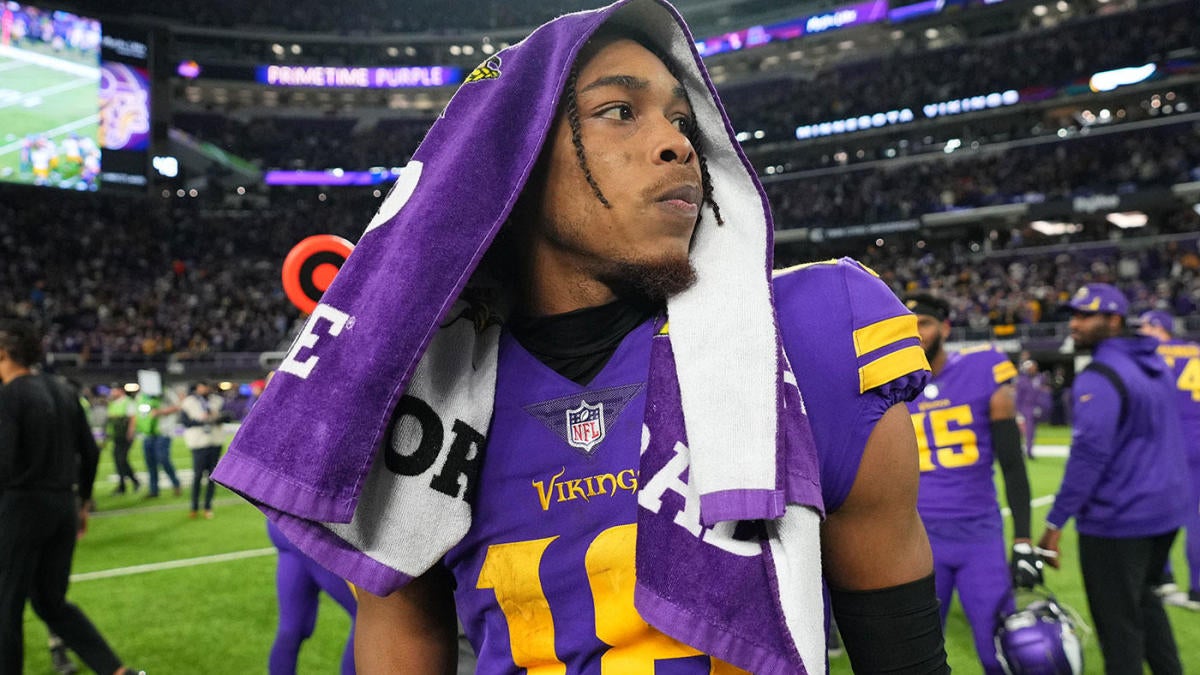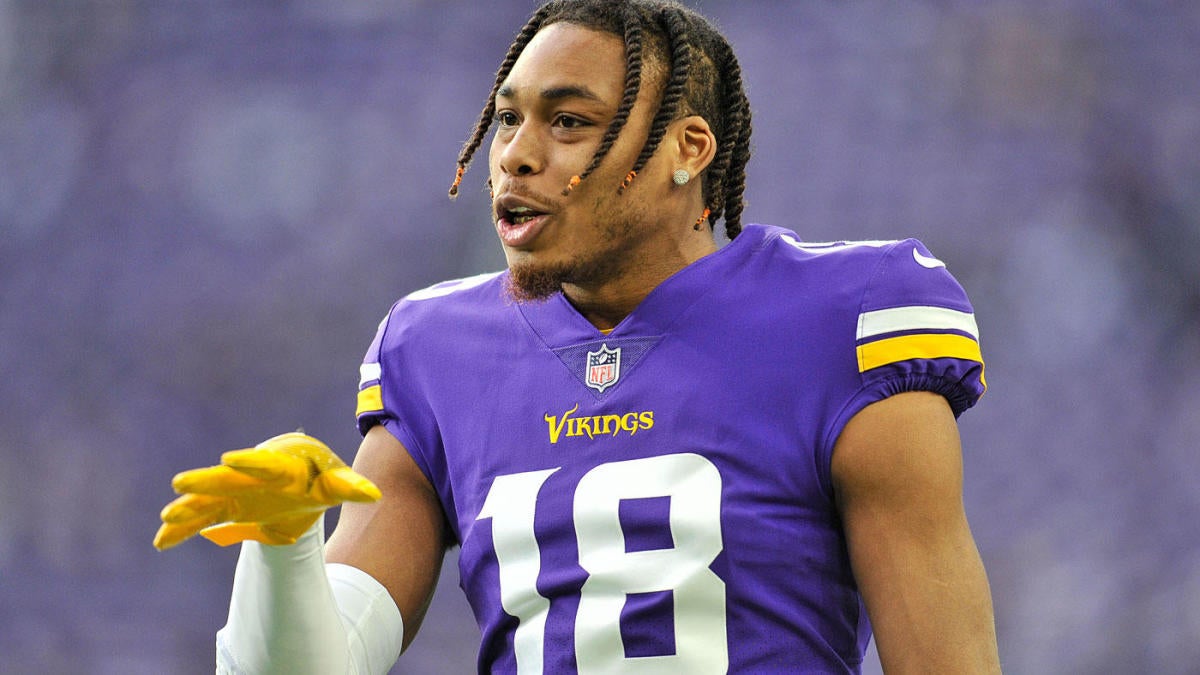Justin Jefferson’s Injury History: Justin Jefferson Injury

Justin Jefferson, the electrifying wide receiver for the Minnesota Vikings, has established himself as one of the most dominant offensive weapons in the NFL. While his on-field prowess is undeniable, his journey has been punctuated by a few notable injuries that have tested his resilience and underscored the physical demands of the game. This exploration delves into the history of Justin Jefferson’s injuries, examining their impact on his performance and career trajectory.
Notable Injuries and Their Impact
The following table details the key injuries that have affected Justin Jefferson’s career:
| Date | Injury | Severity | Impact on Performance |
|---|---|---|---|
| 2020 | Shoulder Injury | Minor | Missed a few practices but played in all games. |
| 2021 | Ankle Injury | Moderate | Missed two games and had limited snaps in others. |
| 2022 | Groin Injury | Mild | Missed one game and was limited in practice for a few weeks. |
Common Types of Injuries
Justin Jefferson’s injury history primarily involves injuries to the lower body, specifically the ankle and groin. These are common injuries among wide receivers, often resulting from the intense physical demands of route running, catching passes, and navigating collisions with defenders.
Impact on Playing Time, Statistics, and Team Success
Justin Jefferson’s injuries have had a demonstrable impact on his playing time and statistical performance. While his overall production remains remarkable, his absences due to injury have inevitably affected his ability to consistently rack up impressive numbers. For instance, his ankle injury in 2021 caused him to miss two games, which significantly impacted his receiving yards and touchdown totals for the season.
The Current Injury

Justin Jefferson’s recent injury has cast a shadow over the Minnesota Vikings’ offensive plans. While the specifics of the injury have not been fully disclosed, the potential impact on the team’s performance is significant.
The Nature of the Injury
Jefferson’s injury appears to be a hamstring strain, a common ailment among athletes, particularly those involved in explosive movements. This type of injury occurs when the muscles in the back of the thigh are overstretched or torn, resulting in pain and discomfort. The mechanism of injury could be a sudden sprint, a forceful change of direction, or a direct impact on the hamstring area.
The Potential Severity of the Injury
The severity of a hamstring strain can range from mild to severe, with the recovery timeline varying accordingly. Mild strains typically involve minor muscle fiber tears and can heal within a few weeks. Severe strains, however, involve complete muscle tears and require a significantly longer recovery period, often involving surgery and extensive rehabilitation.
The Expected Recovery Timeline
Based on historical data and typical recovery timelines for hamstring injuries, Jefferson’s absence could range from a few weeks to several months. Factors influencing the recovery process include the severity of the strain, the player’s age, and the effectiveness of the rehabilitation program. For example, in 2018, Tampa Bay Buccaneers wide receiver Chris Godwin suffered a hamstring strain that kept him sidelined for three weeks. However, in 2019, New York Giants running back Saquon Barkley sustained a severe hamstring tear that required surgery and kept him out for the remainder of the season.
The Impact on the Vikings’ Offensive Strategy
Jefferson’s absence will undoubtedly impact the Vikings’ offensive strategy. As the team’s primary receiving threat, Jefferson’s ability to stretch the field and create mismatches for opposing defenses is invaluable. Without him, the Vikings will likely need to adjust their offensive schemes to rely more heavily on other receivers, such as Adam Thielen and K.J. Osborn. Additionally, the team might focus on a more balanced offensive approach, involving a greater emphasis on the running game.
Implications and Future Outlook

Justin Jefferson’s injury, while not life-threatening, raises significant concerns about its potential impact on his career. The injury’s severity and the recovery process will determine the long-term consequences. This section explores the potential risks, challenges, and strategies for mitigating the impact of the injury.
Potential Risks and Challenges
The potential risks associated with Justin Jefferson’s injury are multifaceted and depend on the specific nature of the injury. However, common risks include:
- Re-injury: A significant risk, especially if the injury is not fully healed or if Jefferson returns to play too soon. This can lead to a prolonged recovery period and potentially even more severe damage.
- Loss of Performance: Even if the injury heals completely, there is a chance that Jefferson may experience a decline in performance, especially if the injury affects his agility, speed, or explosiveness.
- Reduced Playing Time: Jefferson’s injury could lead to reduced playing time, either due to the injury itself or the Vikings’ cautious approach to managing his recovery.
- Psychological Impact: The injury could affect Jefferson’s confidence and mental state, which can impact his performance on the field.
Impact on Long-Term Career Trajectory
The impact of Justin Jefferson’s injury on his long-term career trajectory is difficult to predict with certainty. However, the following factors are crucial to consider:
- Severity of the Injury: The severity of the injury will determine the length of the recovery period and the potential for long-term complications. A more severe injury could have a more significant impact on Jefferson’s career.
- Age and Previous Injuries: Jefferson’s age and any previous injuries could influence his recovery and long-term prospects. Younger players with no previous injury history tend to recover more quickly and with fewer long-term complications.
- Rehabilitation and Management: The quality of Jefferson’s rehabilitation and the Vikings’ management of his recovery will be critical in determining his return to play and long-term health.
- Adaptability and Resilience: Jefferson’s ability to adapt to the injury and his resilience will play a significant role in his long-term career success.
Strategies for Mitigating the Impact, Justin jefferson injury
The Vikings can employ various strategies to mitigate the impact of Justin Jefferson’s injury and support his recovery:
- Thorough Rehabilitation: The Vikings should ensure that Jefferson undergoes a comprehensive rehabilitation program under the supervision of experienced medical professionals. This program should focus on restoring his strength, flexibility, and range of motion.
- Cautious Return to Play: The Vikings should take a cautious approach to Jefferson’s return to play, gradually increasing his workload and monitoring his progress closely. They should avoid rushing him back before he is fully recovered.
- Strategic Game Planning: The Vikings should adjust their game plan to account for Jefferson’s potential limitations during his recovery. This may involve reducing his snaps or altering his role in the offense.
- Mental Health Support: The Vikings should provide Jefferson with mental health support to help him cope with the psychological impact of the injury and maintain his confidence.
Justin jefferson injury – Justin Jefferson’s recent injury has sent shockwaves through the NFL, and while details are still emerging, the possibility of a meniscus tear has been a major concern. This type of injury, common in athletes, can significantly impact mobility and performance, raising questions about Jefferson’s availability for the upcoming season.
The Vikings will be closely monitoring his recovery and hoping for a swift return of their star receiver.
Justin Jefferson’s recent injury has raised concerns about his availability for the upcoming season. While the specific details of the injury haven’t been fully disclosed, a torn meniscus is a common football injury, and recovery can vary depending on the severity.
For those interested in learning more about the healing process, torn meniscus recovery provides valuable insights. It’s important to note that Jefferson’s injury may not be a torn meniscus, but understanding the recovery process for this injury can shed light on the potential timeline and challenges he may face.
